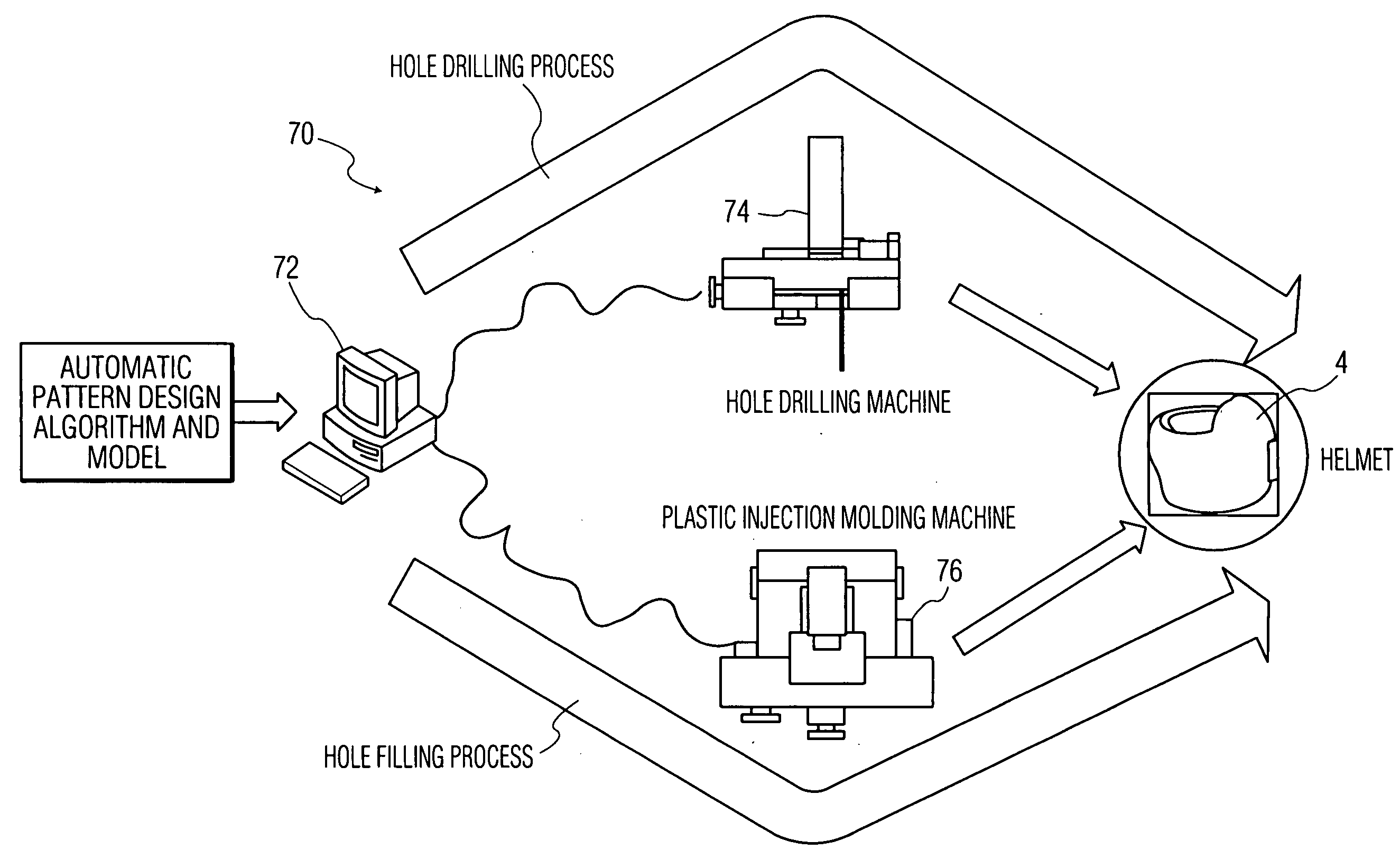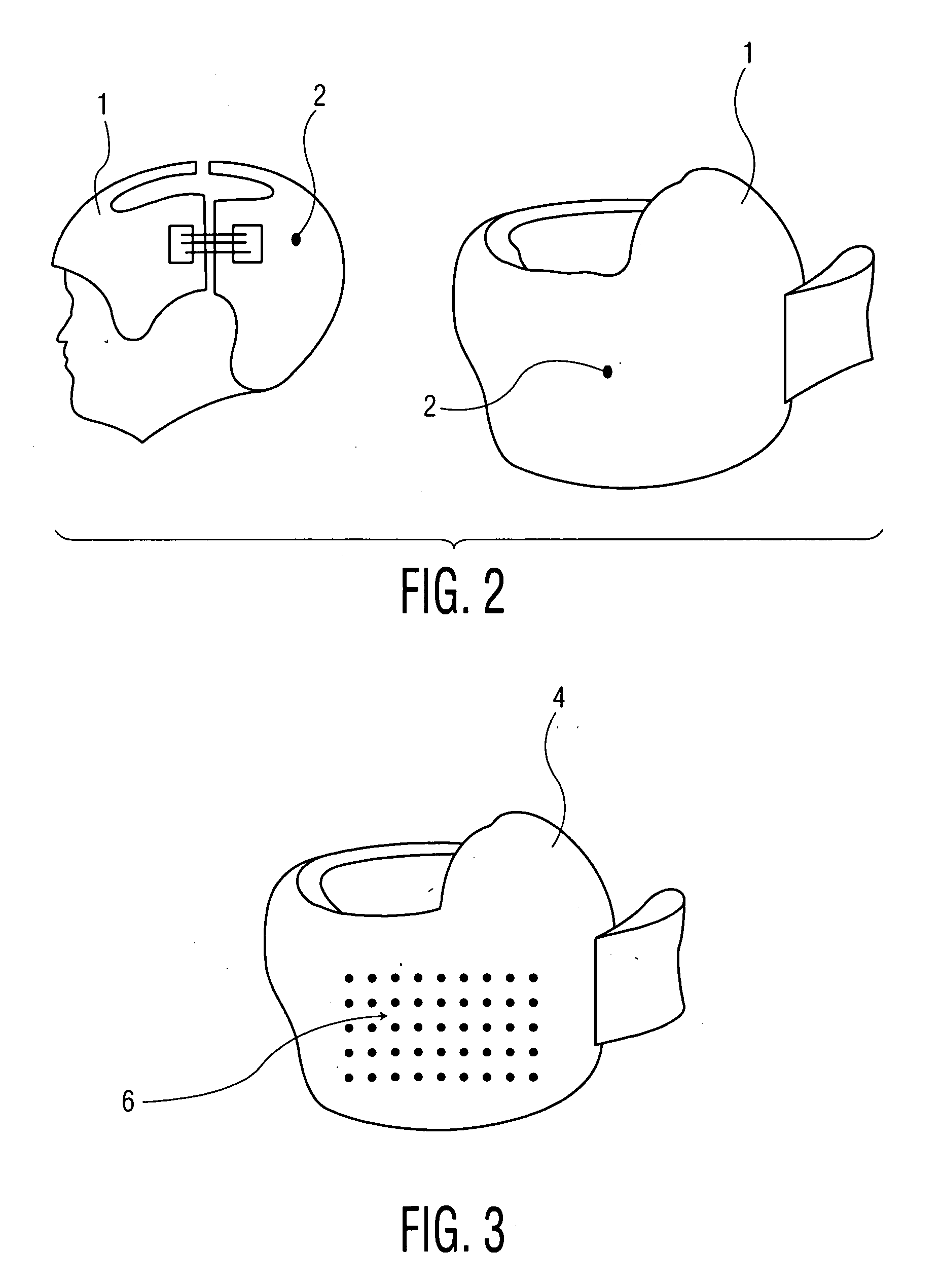System and method for sweat and temperature control in the treatment of positional plagiocephaly
a positional plagiocephaly and temperature control technology, applied in the field of positional plagiocephaly treatment systems and methods, can solve the problems of affecting the treatment effectiveness, affecting the patient's treatment, so as to reduce the likelihood of excessive sweating, and not negatively influence the patient's treatment
- Summary
- Abstract
- Description
- Claims
- Application Information
AI Technical Summary
Benefits of technology
Problems solved by technology
Method used
Image
Examples
Embodiment Construction
[0018]An analysis of typical helmets used in orthotic cranioplasty reveals that the main reason excessive sweating occurs is a lack of air vents. This lack of ventilation hinders heat dissipation and sweat evaporation. FIG. 2 shows one current helmet 1, in which it can be seen that the entire rear portion 2 of an infant's head is fully covered by the helmet 1 so that outside air cannot directly contact the head.
[0019]FIG. 3 illustrates an exemplary helmet 4 incorporating an array of ventilation holes 6 according to the disclosed design. The design is simple in appearance and does not require additional expensive materials when compared to current helmets. Customization of the array of ventilation holes 6 for a particular patient may achieve optimal anti-sweat performance for that patient. Specifically, the ventilation design should be adaptive to the physiology of the individual infant's head, and may be guided by one or more of the following four factors: (1) the size of ventilatio...
PUM
 Login to View More
Login to View More Abstract
Description
Claims
Application Information
 Login to View More
Login to View More - R&D
- Intellectual Property
- Life Sciences
- Materials
- Tech Scout
- Unparalleled Data Quality
- Higher Quality Content
- 60% Fewer Hallucinations
Browse by: Latest US Patents, China's latest patents, Technical Efficacy Thesaurus, Application Domain, Technology Topic, Popular Technical Reports.
© 2025 PatSnap. All rights reserved.Legal|Privacy policy|Modern Slavery Act Transparency Statement|Sitemap|About US| Contact US: help@patsnap.com



